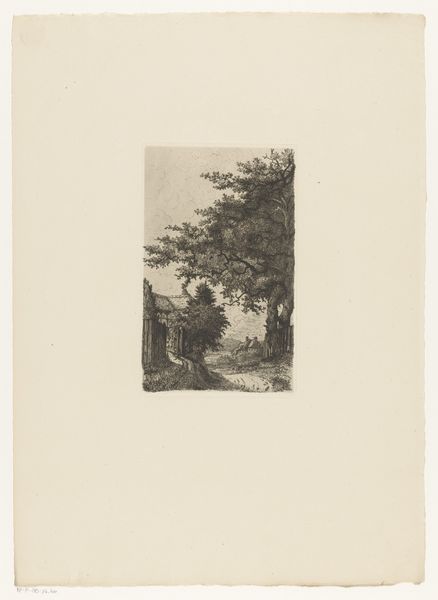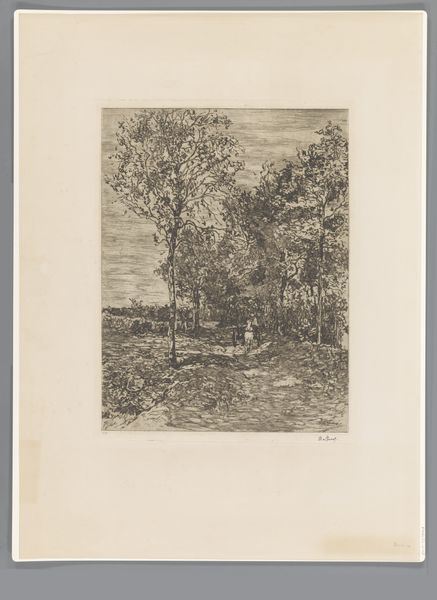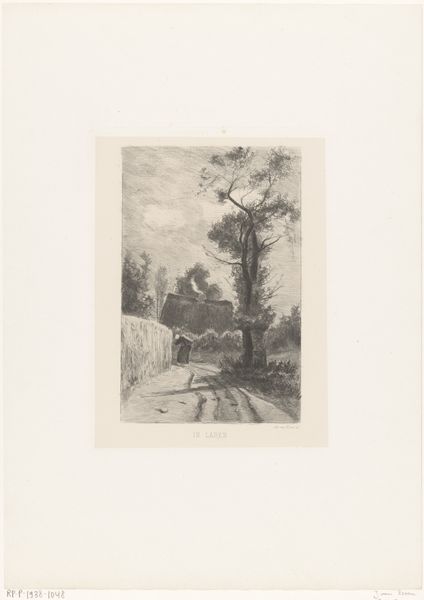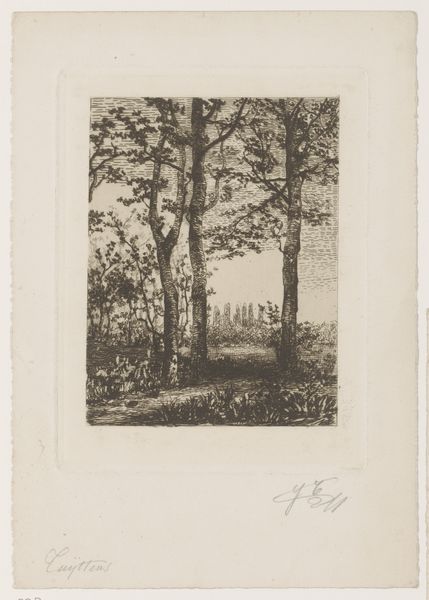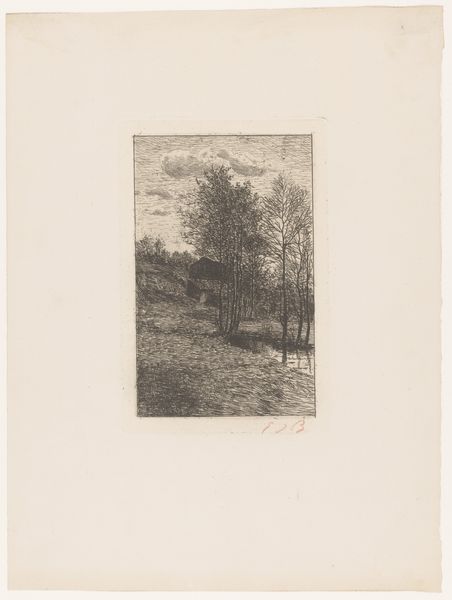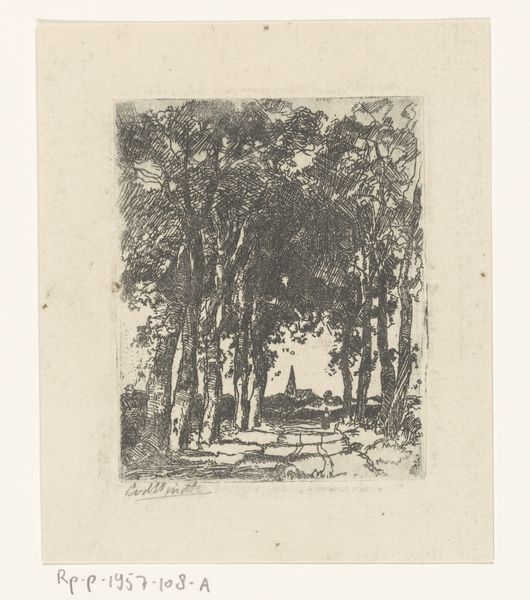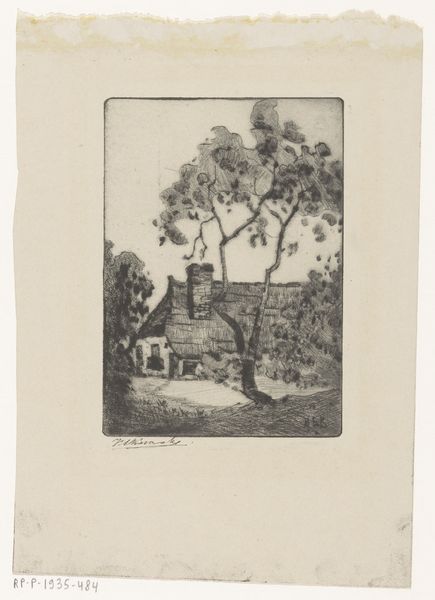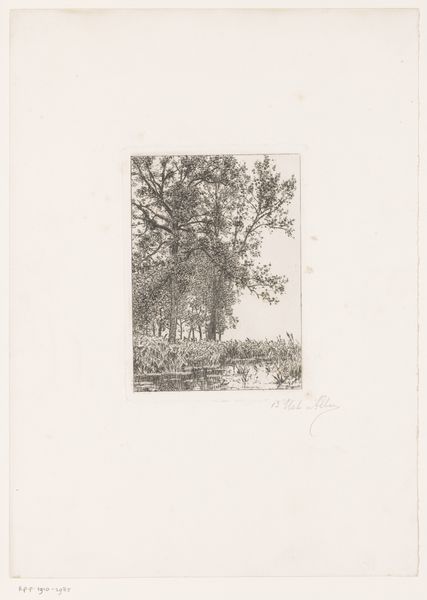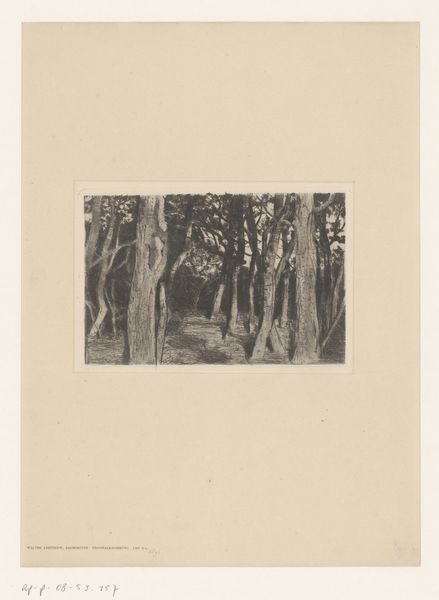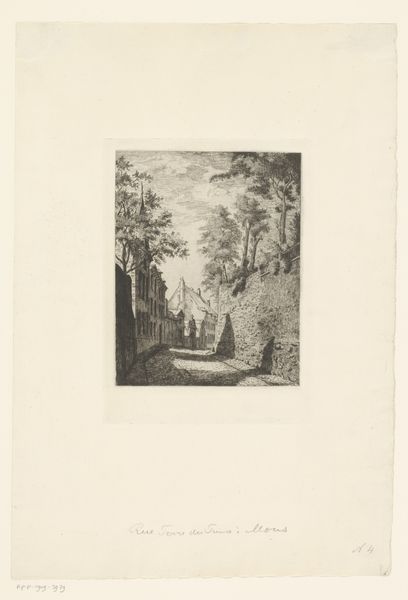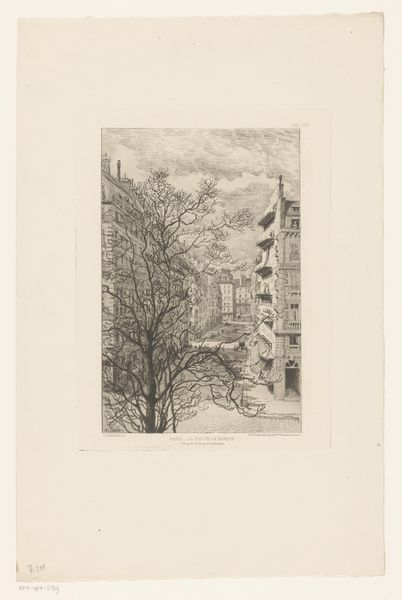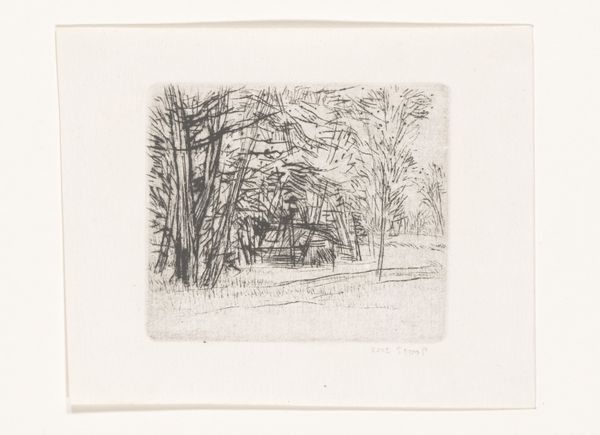
Dimensions: height 161 mm, width 129 mm
Copyright: Rijks Museum: Open Domain
Curator: Here we have Jean Théodore Joseph Linnig's "Wachthuis in de vestingmuur van Antwerpen," an etching and ink drawing from 1868. The title translates to "Guardhouse in the ramparts of Antwerp." Editor: Oh, that little guardhouse looks so forlorn, standing half in shadow. It reminds me of childhood games of hide and seek! The crisp line work makes the image so captivating. Curator: Right. The crisp lines are a result of the etching process combined with ink wash drawing, where the acid bites into the metal to create recessed lines for the image, filled by the ink to make prints. Considering its function within city infrastructure, the detailed ornamentation seems almost superfluous. The city ramparts were crucial elements of the fortifications in Antwerp. Their construction provided countless labor opportunities. Editor: Well, someone cared enough to make it pretty. It does make me wonder who occupied that guardhouse, and the purpose behind embellishing what must have been, ultimately, a somewhat tedious, solitary job. Were these just men, or soldiers who served for several years in the army? Curator: Possibly, Antwerp served as a garrison city. What I find interesting is that the technique, a reproductive medium allowed the artist to share images, of ordinary architecture and citizens relaxing outside the guardhouse with a wide audience. It suggests a broader consumption of images celebrating the urban environment beyond traditional high-art subjects like portraits or historical events. It becomes something quite special when the print medium itself, usually considered 'low art,' meets such meticulous craft. Editor: Indeed. Seeing how the materials and the people interact makes the scene even more fascinating. Even that bright light that separates the shade almost speaks. It adds a touch of nostalgia, imagining life in this place all that time ago, observing folks from inside and outside, sharing an afternoon beneath the watchful gaze of guards who perhaps enjoyed a joke amongst themselves. It is remarkable how all of these aspects—the construction of the wall, to the printing of the artwork– add meaning to something which on the surface seems just quaint. Curator: Absolutely. It pushes one to think of art, labor, materials, cityscapes, and ultimately romanticism. Editor: All tied together! It's as though Linnig caught a fleeting glimpse of Antwerp’s story.
Comments
No comments
Be the first to comment and join the conversation on the ultimate creative platform.

